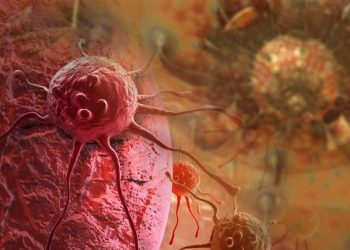Staging helps your team plan treatment and predict how well you might do. The stage describes how much cancer is in your body and where it is located.
The most common staging system for liver cancer is T-N-M, created by the American Joint Committee on Cancer. It looks at the size of your tumor and whether it has spread to nearby blood vessels or lymph nodes.
T1
In stage 1 there is a single tumor that hasn’t grown into blood vessels and hasn’t spread to nearby lymph nodes or distant areas of the body (metastasis). This is an early stage, and liver function is good.
Liver cancer can grow quickly, and if not treated in time it can become advanced or aggressive. This can lead to severe symptoms and a decreased ability for the liver to function properly.
A physician can determine the stage of liver cancer by using the AJCC T, N, and M system. The T, N, and M scores are used to determine a person’s treatment options. The T score describes the size of the primary tumor, and the N and M score describe whether or not it has spread to other parts of the body. There are other staging systems, including the Milan and USCF, but AJCC is the most commonly used. These systems may use different scoring methods, but the same information is collected.
T2
When cancer cells are discovered in your liver, doctors work to find out how far they have spread. This process is called staging. It includes a numbering system and a description of whether the cancer has spread to lymph nodes and blood vessels near the liver. The stages of liver cancer are T (tumor), N (nodes) and M (metastasis).
You may be able to have surgery to remove the tumour if it is small and has not spread. You could also receive other treatments, such as using heat to destroy the cancer (ablation) or chemotherapy delivered directly to your tumour with a procedure called chemoembolization.
Your doctor will recommend treatment based on the type of liver cancer you have, its stage and your general health. MD Anderson has experts in hepatocellular carcinoma and bile duct cancer (cholangiocarcinoma). These specialists will work together to choose the right treatment for you. They will keep you under regular checkups and watch for signs of the cancer returning.
T3
In stage 3 of liver cancer, one or more tumors have grown into blood vessels and spread to nearby lymph nodes and/or distant sites. The tumors in stage 3 can be divided into subcategories based on their size and whether they have invaded other organs or tissues.
These tests include a physical exam and a blood test called a complete blood count (CBC). A PET scan is another important diagnostic tool. This uses a small amount of radioactive sugar to make a picture of the liver and nearby blood vessels. Cancer cells take up the sugar more quickly than healthy cells, so they show up brighter on the picture.
Doctors use the T, N and M staging system to describe how far a liver cancer has spread. The letter T describes the size of a primary tumor. The number N describes whether the cancer has spread to nearby lymph nodes, and the letter M describes whether it has spread to other organs or tissues.
T4
A person with stage 3 liver cancer has more than one tumor and they have grown into the large blood vessels in the liver. They may also have spread into nearby tissue, like lymph nodes or the organs around the liver. But the cancer hasn’t spread beyond the liver to distant locations, such as the lungs or bones.
There are different staging systems, and your doctor will use the one they think is best for you. The most commonly used system, TNM, groups tumors into categories based on their size (T), whether they have affected nearby blood vessels or organs (N) and if the cancer has spread to other parts of the body (M).
A doctor will decide what treatment is best for you at this stage, which might include surgery, radiation therapy and chemotherapy. Some people at this stage will also be eligible for clinical trials, which are studies of new treatments that might improve survival or control symptoms.
T5
The liver collects blood from the intestines, filters it and processes nutrients. It also stores fat, makes bile to help digest food and make energy, and makes substances that control blood clotting. The liver can be affected by many diseases, including cirrhosis, which raises the pressure of blood in the portal vein that carries blood to the liver.
Doctors use imaging tests to find out the size and location of tumors. They may also do a biopsy to get a tissue sample and examine it under a microscope. This lets them confirm the diagnosis and know what type of cancer it is.
Staging describes how far a cancer has grown and spread. Your stage can affect your treatment options and chances of remission. The most common staging system is called TNM, created by the American Joint Committee on Cancer. It explains how big a tumor is, whether it has invaded nearby tissues or blood vessels, and if the cancer has reached lymph nodes near the site of the tumor.
T6
Your doctor will figure out the stage of your liver cancer by using a system called TNM. T describes the size of your tumor and how far it has grown into blood vessels or other organs around it, N describe if it has spread to nearby lymph nodes, and M describes whether it has spread to distant sites in your body. The letter X or number (0-4) following each of these factors indicates severity.
If you have stage 3 liver cancer, it means that it has either grown into nearby blood vessels or it has spread to lymph nodes and surrounding tissue. This is more advanced than stage 2 cancer and it is less likely to be cured.
Your doctor may prescribe medications like regorafenib (Stivarga) or cabozantinib (Cabometyx) to treat your cancer, or immunotherapy drugs such as pembrolizumab (Keytruda) or nivolumab (Opdivo). These medicines can extend survival and improve quality of life for patients with liver cancer that has not spread to other parts of the body.
T7
During this stage, doctors are not able to remove all of the tumours from the liver (partial hepatectomy or transplant). The remaining tumour(s) can grow and have spread to nearby blood vessels or to other organs and tissues. In addition, the location of the tumour makes surgery unsafe (either close to a major blood vessel or in a region with other organs that cannot be safely removed).
Understanding your cancer’s stage helps your care team make treatment decisions. Staging describes how far the cancer has progressed, which can influence its prognosis and your treatment options.
Your doctor uses diagnostic tests to find out the stage of your cancer. This information helps them recommend the best type of treatment for you. In some cases, your doctor may also use targeted therapy or immunotherapy to help keep the cancer from growing. These types of treatments target specific genes, proteins or the tissue environment that contributes to cancer growth and survival.
T8
When a person is diagnosed with liver cancer, it’s important for their doctor to learn the extent (stage) of the disease. This information helps doctors decide what treatment might be most helpful. Staging is based on factors such as tumor size, location, and whether or not it has spread.
Your doctor may use advanced imaging tests such as ultrasound, CT scan or MRI to determine stage. They will also use blood tests to check your overall health and to look for specific liver function markers.
Several different staging systems are used to describe liver cancer. The TNM system created by the American Joint Committee on Cancer and the Barcelona Clinic Liver Cancer staging system are two popular options. Each has its pros and cons. For example, the TNM system doesn’t take liver function into account. This can affect survival. The other staging systems consider liver function and incorporate other factors such as ascites and bilirubin levels.
T9
Doctors use a system called staging to describe how far the cancer has grown or spread. It’s based on T (tumor), N (nodes) and M (metastasis).
Stage 3A means that one or more tumors are present, but they have not grown into any major blood vessels. This stage is also called “noninvasive.” Stage 3B means that one or more tumors have grown into a major branch of the hepatic or portal veins, but they have not spread to any nearby lymph nodes or distant sites.
Stage 4 liver cancer has spread to other organs, such as the lungs or bones. It may also be found in nearby lymph nodes. Your doctors can treat this type of cancer by using medicines or with radiation therapy, such as EBRT or SBRT. They might suggest clinical trials for new treatments, such as targeted therapies or immunotherapies. These newer approaches may help preserve healthy liver tissue and improve the chances of a cure.









